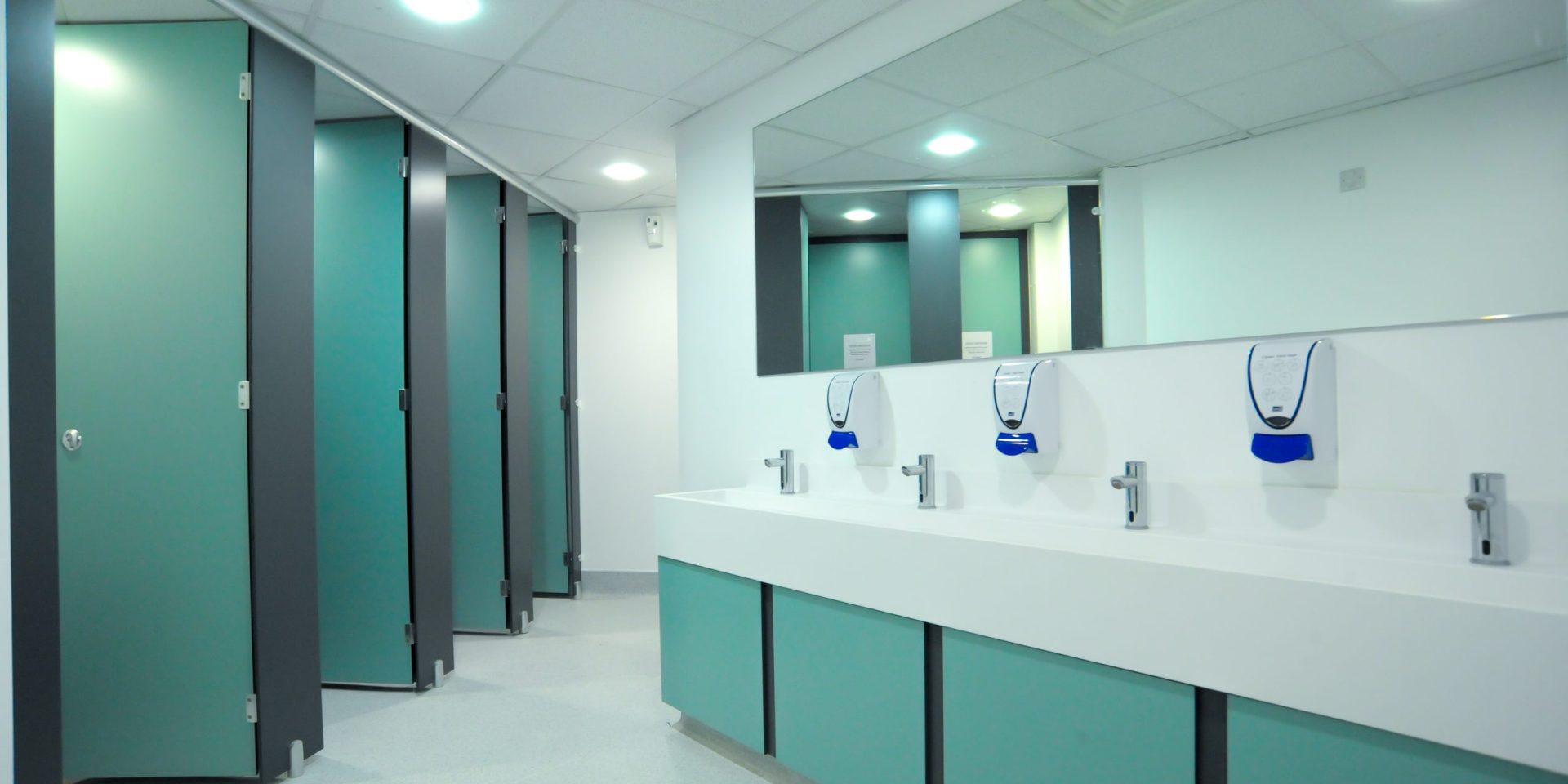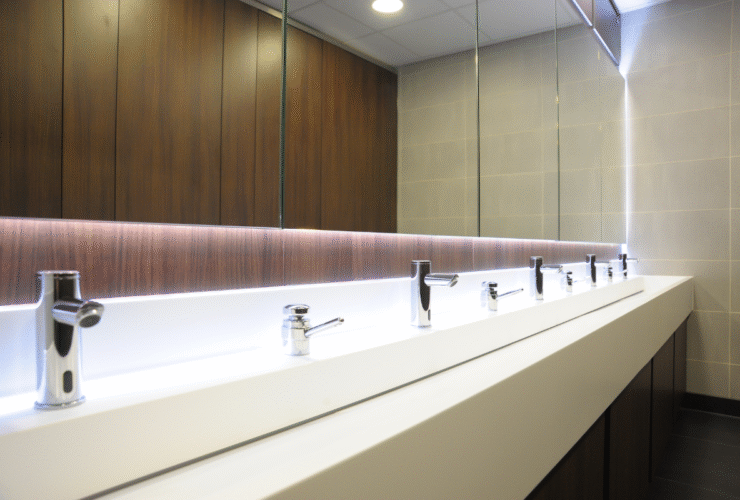In our quest for efficiency and hygiene, one crucial aspect often goes unnoticed – the number of toilets per person. While it may seem like a trivial matter, the optimal ratio of toilets to individuals can have a profound impact on public health, productivity, and overall well-being. Whether it’s in schools, offices, or public spaces, the availability and accessibility of toilets play a significant role in maintaining cleanliness and preventing the spread of diseases. However, determining the perfect balance between efficiency and comfort is no easy task. Factors such as population density, gender distribution, and usage patterns must be carefully considered to ensure that everyone’s needs are met. Join us on this enlightening journey as we delve into the world of toilet ratios and unravel the secrets to creating spaces that promote both efficiency and impeccable hygiene.
The Evolution of Toilet Sanitation Standards
Toilet sanitation standards have come a long way throughout history. In ancient times, communal toilets were the norm, with little regard for personal privacy or hygiene. However, as societies progressed, the need for individual toilets became apparent. The advent of indoor plumbing revolutionized sanitation practices, allowing for the installation of private toilets in homes and public spaces. Today, modern sanitation standards emphasize the importance of cleanliness, privacy, and accessibility, driving the need for an optimal number of toilets per person.
With the evolution of toilet sanitation standards, the concept of toilet efficiency has gained prominence. Efficiency refers to the balance between providing sufficient toilet facilities and minimizing waste, energy consumption, and maintenance costs. Achieving this balance requires a deep understanding of various factors that influence toilet usage and the needs of different user groups.
Factors to Consider when Determining the Optimal Number of Toilets per Person
Determining the optimal number of toilets per person is a complex task that requires considering several factors. Population density is a crucial factor, as areas with high population densities require more toilets to cater to the needs of the community. Additionally, the gender distribution of the population must be taken into account, as men and women have different usage patterns and requirements.
Usage patterns play a significant role in determining toilet provision. For example, in office buildings, peak usage times may occur during breaks or after meetings. Schools may experience high usage during class breaks. Understanding these patterns helps in designing toilet facilities that can accommodate peak demand without compromising efficiency or hygiene.
Accessibility is another critical consideration. Toilets should be conveniently located and easily accessible to all individuals, including those with disabilities. Adequate provision of accessible toilets is essential for promoting inclusivity and ensuring that everyone has equal access to sanitary facilities.
International Guidelines and Recommendations for Toilet Provision
To ensure a standardized approach to toilet provision, international organizations and governments have developed guidelines and recommendations. The World Health Organization (WHO), for instance, provides guidelines for sanitation and hygiene, including recommendations for the number of toilets per person. These guidelines take into account factors such as population density, gender distribution, and usage patterns, providing a framework for policymakers and planners to create toilet facilities that meet the needs of their communities.
In addition to the WHO, organizations like the United Nations and national governments have also developed guidelines and regulations for toilet provision. These guidelines serve as a reference point for ensuring that sanitation standards are met and that the health and well-being of individuals are protected.
Case Studies: Examining Different Approaches to Toilet Provision
To gain a deeper understanding of how different approaches to toilet provision can impact efficiency and hygiene, let’s explore some case studies. These case studies will highlight the challenges faced by various communities and the innovative solutions implemented to address their specific needs.
One such case study is the Tokyo subway system in Japan. With millions of commuters using the subway daily, ensuring sufficient toilet facilities presented a significant challenge. To overcome this, the Tokyo Metro implemented a system that monitors toilet usage in real-time, allowing for efficient maintenance and ensuring that toilets are always available when needed.
Another interesting case study is the city of Singapore, known for its impeccable cleanliness. Singapore has implemented a comprehensive approach to toilet provision, including the use of smart technologies and regular cleaning schedules. By prioritizing hygiene and efficiency, Singapore has set a benchmark for other cities to follow.
The Impact of Inadequate Toilet Facilities on Public Health and Hygiene
Inadequate toilet facilities can have far-reaching consequences on public health and hygiene. Without sufficient toilets, individuals may resort to unsanitary practices such as open defecation, leading to the spread of diseases and contamination of water sources. Lack of privacy and accessibility can also have a negative impact on individuals’ well-being, particularly for vulnerable groups such as women, children, and people with disabilities.
Moreover, the psychological impact of inadequate toilet facilities should not be underestimated. Lack of proper sanitation can lead to embarrassment, discomfort, and a decrease in productivity. By prioritizing the provision of sufficient and hygienic toilets, communities can create environments that promote both physical and mental well-being.
Overcoming Challenges in Implementing Sufficient Toilet Infrastructure
Implementing sufficient toilet infrastructure comes with its own set of challenges. Funding, space constraints, and cultural factors can all pose obstacles to achieving optimal toilet provision. However, with careful planning, collaboration between stakeholders, and innovative solutions, these challenges can be overcome.
Public-private partnerships have proven to be effective in addressing funding and maintenance issues. By involving both public and private entities, the burden of toilet provision can be shared, ensuring sustainable and well-maintained facilities. Additionally, creative approaches such as modular toilets and utilization of underutilized spaces can help overcome space constraints, enabling efficient use of available resources.
Innovations in Toilet Technology for Improved Efficiency and Hygiene
Advancements in toilet technology have played a significant role in improving efficiency and hygiene. Innovations such as water-saving flushing systems, touchless fixtures, and self-cleaning mechanisms have revolutionized the way toilets are designed and used. These technologies not only conserve water but also minimize the need for manual cleaning, reducing the risk of cross-contamination.
Smart toilets, equipped with sensors and data analytics capabilities, provide valuable insights into usage patterns, enabling proactive maintenance and resource optimization. These technological advancements not only enhance the user experience but also contribute to overall efficiency and hygiene.
Conclusion: Striving for Universal Access to Proper Toilet Facilities
In conclusion, the optimal number of toilets per person is a crucial consideration for ensuring efficiency and maintaining impeccable hygiene in public spaces. By carefully considering factors such as population density, gender distribution, usage patterns, and accessibility, communities can create spaces that meet the diverse needs of individuals. International guidelines and case studies provide valuable insights and benchmarks for toilet provision, while innovations in technology continue to enhance efficiency and hygiene.
As we strive for universal access to proper toilet facilities, it is essential to recognize the impact that adequate sanitation has on public health, productivity, and overall well-being. By prioritizing the provision of sufficient and hygienic toilets, we can create environments that promote cleanliness, prevent the spread of diseases, and ensure the dignity and comfort of every individual. Let us continue our journey towards a world where the optimal number of toilets per person is no longer an afterthought but a fundamental aspect of our communities.





